Tech Workers Are Fleeing the Bay Area — Here’s Where They’re Moving

In 1971, long before the San Francisco Bay Area became a $2.8 trillion neighborhood, journalist Don Hoefler coined the term “Silicon Valley.” There were no social media networks then, no search engines and no e-commerce, but companies like Atari, Oracle and Apple made their homes there in the 1970s. By the 1980s, the Bay Area was ground zero for all things computers, and the region became a worldwide mecca for tech workers and entrepreneurs of all stripes.
Read: Americans’ Savings Drop to Lowest Point in Years
The region’s unique relationship with tech, however, became a devil’s bargain — particularly in San Francisco. The industry brought the biggest, richest and most innovative companies in the world, and with them came high-paying jobs and the waves of educated professionals they attract. The industry’s dominance, however, stirred intense disdain among many locals who found themselves priced out and sidelined by a never-ending influx of hip, young, rich tech geeks who didn’t mind paying $7 for coffee and seven figures for a mortgage.
Find Out: Surprising Ways Gen X and Millennials Are Worlds Apart Financially
But it appears that those contemplating leaving their beloved San Francisco to escape the relentless onslaught of tech might not have to — thanks to the pandemic, tech is leaving them. The virus triggered a massive exodus of tech workers out of the Bay Area to destinations all over the country. First, we’ll take a look at San Francisco’s data, and then we’ll see where these workers are going now.
Last updated: Feb. 22, 2021
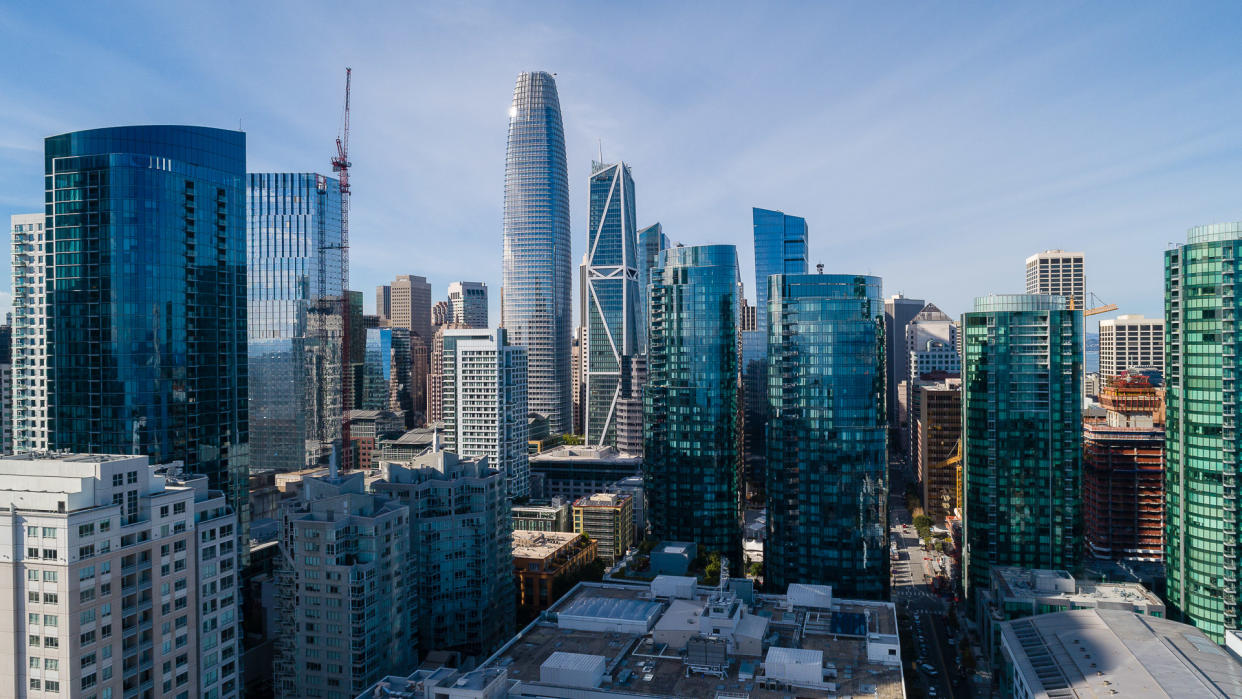
San Francisco
Year-over-year increase in inflow/outflow ratio: -35%
Median annual income: $112,449
Typical monthly rent for a one-bedroom: $1,983
Typical home value: $1,480,497
Cost-of-living index score: 269.3
Estimated population density (sq. mile): 18,128
Livability: 63
Like millions of people in all kinds of occupations all over the country, many San Francisco tech workers learned the hard way during the pandemic that they could do their jobs from anywhere. While many chose to stay put in the city that had been synonymous with their industry for years, plenty of others decided that the only reason they were living so close to Apple, Google, Pinterest and the rest was because that’s where the action was. When the pandemic began turning techies into telecommuters, many used the opportunity to head for slower, cheaper, less politically charged cities — and they took their jobs with them.
Learn More: These Are the 50 Best Cities for Gen Z To Live Well on a Budget
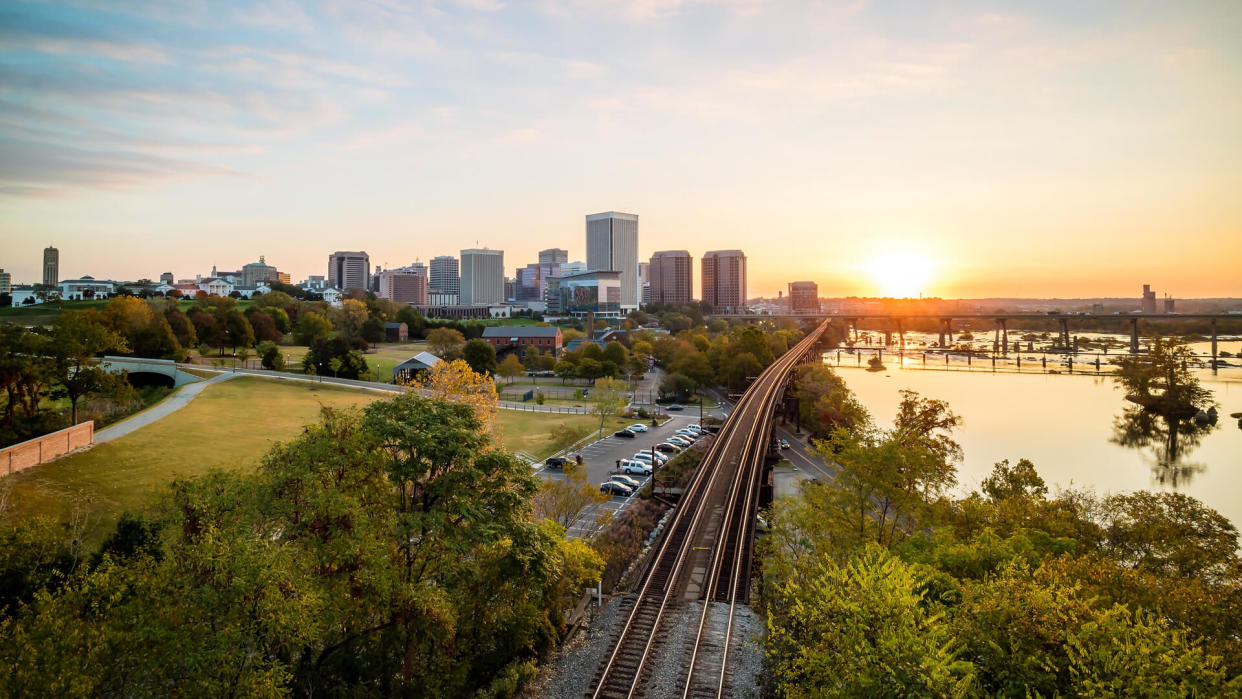
Richmond, Virginia
Year-over-year increase in inflow/outflow ratio: 11.6%
Median annual income: $47,250
Typical monthly rent for a one-bedroom: $1,022
Typical home value: $265,986
Cost-of-living index score: 95.1
Estimated population density (sq. mile): 3,618
Livability: 72
The influx of tech workers into Richmond is just one part of a seismic shift that’s been transforming Virginia’s political and demographic structure. In recent years, the reliably conservative state turned blue as Virginia’s power base moved from the state’s declining rural areas to its ever-expanding suburbs and exurbs. Geographically liberated tech workers only reinforced that dynamic by pouring out of San Francisco and into Virginia’s capital city.
Did You Know: 50 Cities With the Most Overpriced Homes
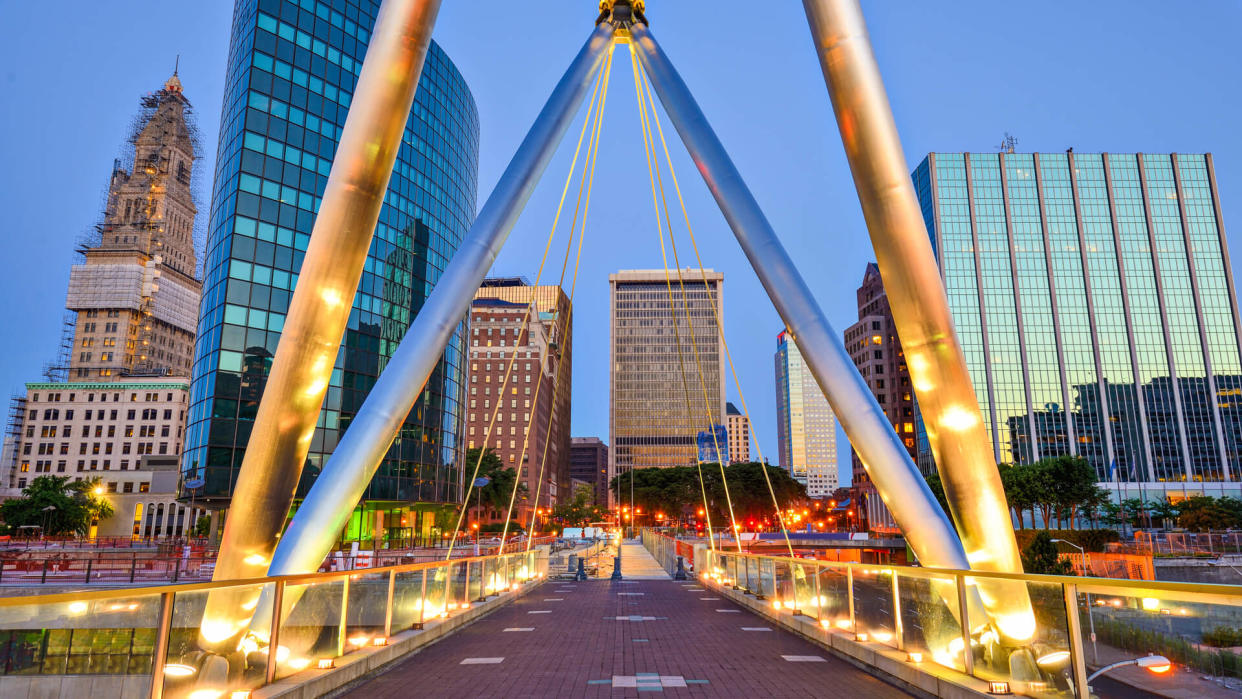
Hartford, Connecticut
Year-over-year increase in inflow/outflow ratio: 15.1%
Median annual income: $36,278
Typical monthly rent for a one-bedroom: $875
Typical home value: $172,789
Cost-of-living index score: 93.9
Estimated population density (sq. mile): 7,153
Livability: 45
It’s not just Hartford — the whole of Connecticut is experiencing a population boom thanks to pandemic-related relocation, with tens of thousands of newly minted telecommuters flooding the state during the second half of 2020 alone. The fact that many of them are tech workers should be a welcome relief. The state’s job market and economy were hit especially hard by the pandemic, in part because Connecticut spent so many years underinvesting in tech.
Read More: 35 Surprising Cities With Low Costs of Living

Minneapolis
Year-over-year increase in inflow/outflow ratio: 16.9%
Median annual income: $62,583
Typical monthly rent for a one-bedroom: $1,032
Typical home value: $312,845
Cost-of-living index score: 106.5
Estimated population density (sq. mile): 7,494
Livability: 65
It makes sense that San Francisco expats would feel at home in Minnesota, particularly the major population center of Minneapolis. The state — and the twin cities of Minneapolis and St. Paul in particular — were one of the country’s top emerging tech hotspots even before the pandemic. According to the Minneapolis Star-Tribune, minority tech professionals, in particular, have made the city home.
Did You Know: The Most Affordable Downtowns To Live In Across America
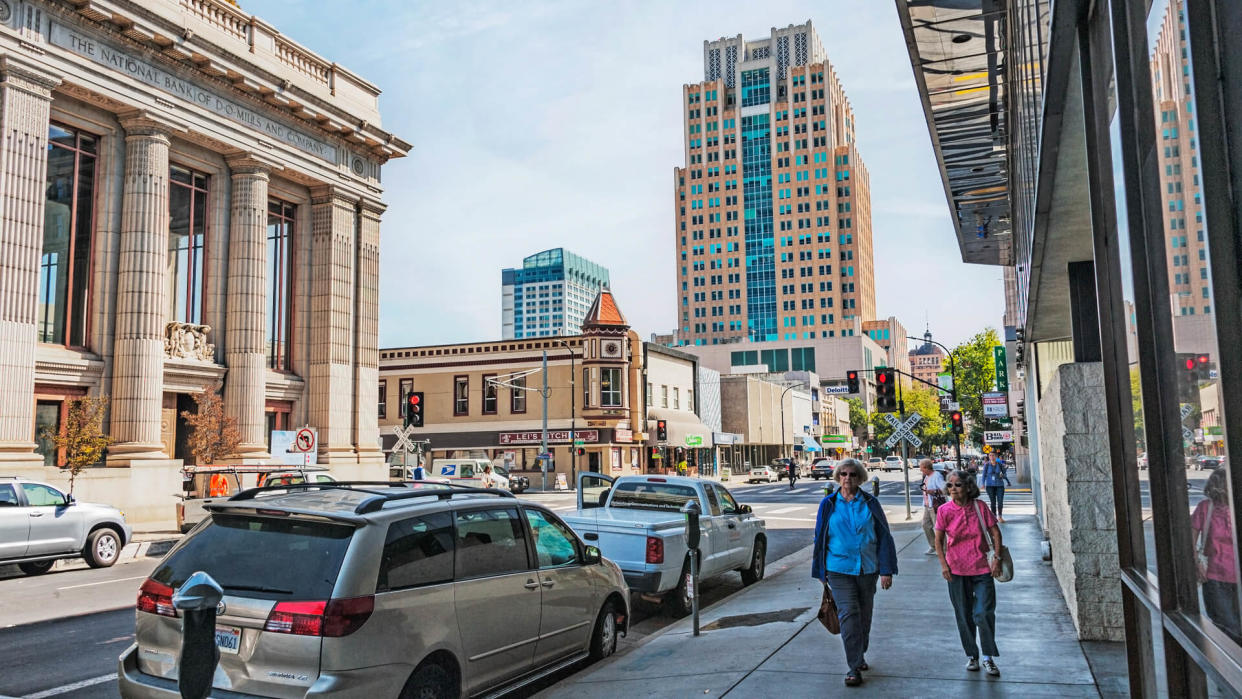
Sacramento, California
Year-over-year increase in inflow/outflow ratio: 17.6%
Median annual income: $62,335
Typical monthly rent for a one-bedroom: $1,195
Typical home value: $399,709
Cost-of-living index score: 118.2
Estimated population density (sq. mile): 4,963
Livability: 58
For many tech professionals looking for greener, cheaper pastures, the exodus out of Silicon Valley only took about two hours to complete and never left California. As California’s population declines, Sacramento remains one of the Golden State’s last major population centers that’s actually adding residents.
Read More: 30 Best Cities for Young Professionals
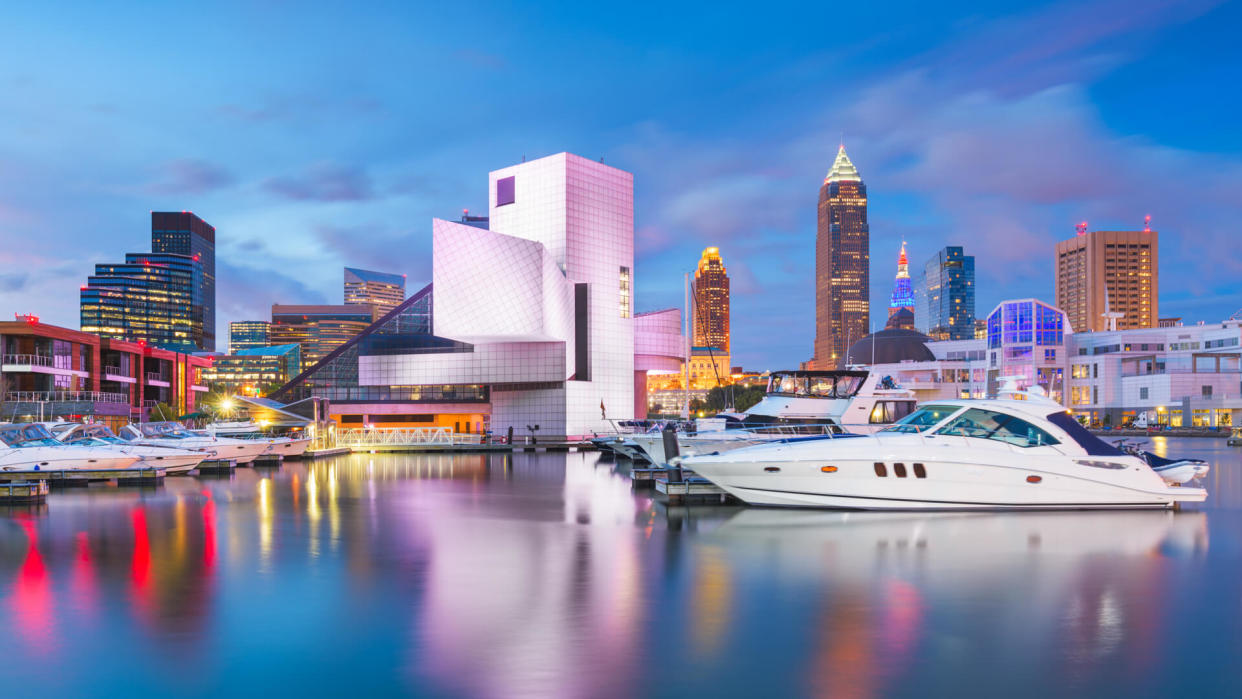
Cleveland
Year-over-year increase in inflow/outflow ratio: 19.9%
Median annual income: $30,907
Typical monthly rent for a one-bedroom: $597
Typical home value: $78,070
Cost-of-living index score: 72.6
Estimated population density (sq. mile): 5,009
Livability: 62
Although Cleveland became the destination for many of San Francisco’s wandering tech wizards, that influx likely won’t be enough to fuel positive population growth. Although Cleveland was America’s original tech hub in 1879 when it became the first city illuminated by electricity, today it’s one of the fastest-shrinking major cities in the country.
Find Out: Best and Worst Cities To Score Your Dream Job
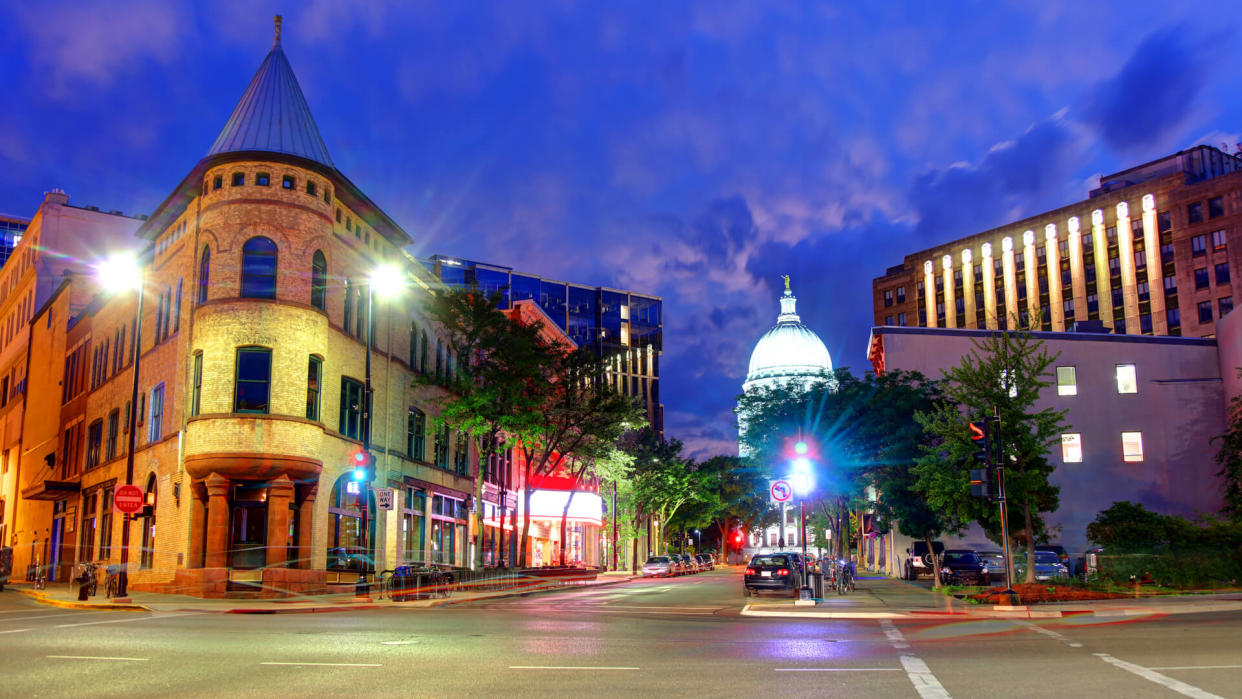
Madison, Wisconsin
Year-over-year increase in inflow/outflow ratio: 74%
Median annual income: $65,332
Typical monthly rent for a one-bedroom: $1,109
Typical home value: $315,517
Cost-of-living index score: 100.6
Estimated population density (sq. mile): 3,195
Livability: 75
The pandemic only accelerated a trend that was already happening in Wisconsin. In 2019, Wisconsin Public Radio reported that despite steady population declines in Milwaukee, the state as a whole was gaining residents. Much of that gain was coming from Madison, where a booming tech industry was drawing young professionals from all over the world.
More From GOBankingRates
Methodology: GOBankingRates referenced LinkedIn data published by Big Technology to identify the cities that have increased their inflow/outflow ratio of tech workers (the percentage of tech workers moving into the cities compared to the percentage moving out) the most between 2019 and 2020. San Francisco has seen its ratio drop 35.3% as it went from gaining significantly more tech workers than it lost in 2019 with a ratio of 1.48 to a current ratio of 0.96. With the cities that have experienced (1) the biggest year-over-year percentage increase in inflow/outflow ratio identified, GOBankingRates took a closer look at some quality and cost-of-living factors that could be keeping workers away from the Bay Area and attracting them to new cities. GOBankingRates looked at each city’s (2) 2019 median annual household income from the U.S. Census Bureau’s American Community Survey, (3) January 2021 typical monthly rent for a one-bedroom unit from Apartment List, (4) December 2020 typical home value from Zillow, (5) cost-of-living index score from Sperling’s Best Places where 100 indicates the typical cost of living in America, (6) estimated population density from AreaVibes and (7) livability score from AreaVibes. All data was collected on and up to date as of Feb. 8, 2021.
This article originally appeared on GOBankingRates.com: Tech Workers Are Fleeing the Bay Area — Here’s Where They’re Moving
